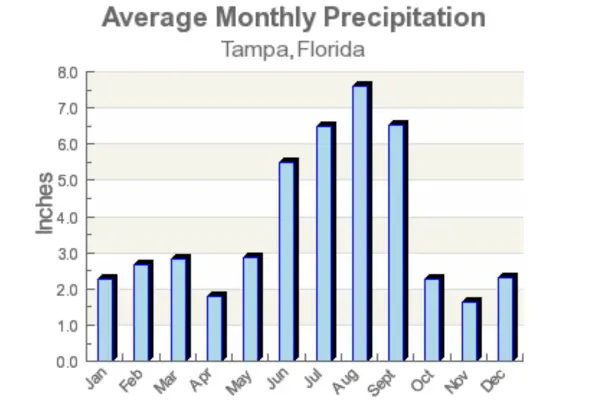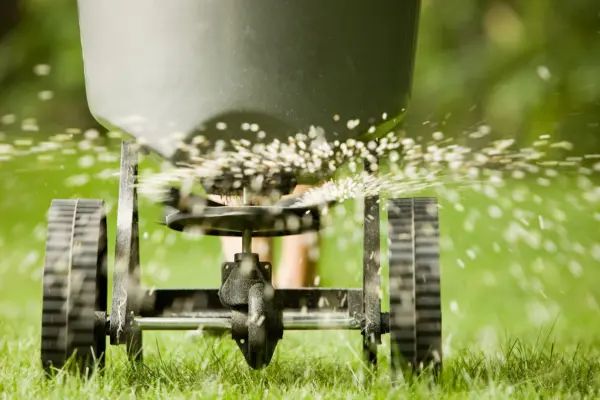To Keep Your Lawn Green and Healthy in Florida requires understanding the nuances of the state’s unique climate and grass types.
Fertilization plays a crucial role in ensuring your lawn gets the nutrients it needs throughout the year.
With Florida’s varied climate—ranging from subtropical to tropical—fertilization schedules must be adapted to local conditions and specific grass types.
In this article, we’ll explore When to Fertilize Lawn in Florida, and provide expert tips for maintaining a lush lawn year-round.
Understanding Florida’s Climate and Lawn Care Needs

Florida’s climate can be broadly categorized into three regions, each influencing lawn care practices differently:
Northern Florida: Features a temperate climate with cooler winters and hot, humid summers. Lawns in this region may experience dormancy during the winter, requiring a different fertilization strategy compared to other areas.
Central Florida: Characterized by a subtropical climate with mild winters and hot, humid summers. This region often requires consistent fertilization to maintain lush growth throughout the year.
Southern Florida: Exhibits a tropical climate with hot, humid weather year-round and a pronounced dry season. Lawns in southern Florida need special attention to nutrient balance and irrigation.
Understanding these regional differences helps tailor fertilization practices to suit each climate zone, optimizing lawn health and growth.
When to Fertilize Lawn in Florida

A well-timed fertilization schedule ensures that your lawn receives nutrients when it needs them the most. Here’s an expanded month-by-month guide tailored for Florida’s diverse climate:
Spring Fertilization (March to April)
Spring is an essential time for lawn care as it marks the beginning of the growing season.
Timing: The first fertilization should occur in mid-April, once the frost danger has passed and temperatures start to rise. This timing helps kickstart the lawn’s growth after winter dormancy.
Fertilizer Type: Use a balanced, all-purpose fertilizer with a ratio such as 10-10-10 or 15-15-15. These ratios provide a comprehensive nutrient profile to support initial spring growth.
Application Tips: Opt for granular or slow-release fertilizers to avoid nutrient leaching. Ensure even application to cover all areas of the lawn. Before applying, it’s important to check if your lawn fertilizer is expired to ensure maximum effectiveness.
Summer Fertilization (June to August)
During the summer months, your lawn requires additional nutrients to withstand heat and humidity.
Timing: Apply the second round of fertilization in mid-June or early July. This timing aligns with peak growth periods and helps sustain healthy grass through the hot summer months.
Fertilizer Type: Choose a slow-release nitrogen fertilizer to promote steady growth without causing excessive leaf production. A ratio like 20-0-10 can be beneficial.
Application Tips: Be cautious with watering. Overwatering can lead to nutrient runoff, while underwatering can reduce nutrient absorption.
Fall Fertilization (September to October)
As the growing season comes to a close, fall fertilization prepares your lawn for the cooler months ahead.
Timing: The final application should be completed by mid-September to ensure that nutrients are available as the grass begins to slow its growth in cooler temperatures.
Fertilizer Type: Select a fertilizer with higher potassium content, such as 10-10-20, to strengthen roots and enhance disease resistance.
Application Tips: Avoid late fall applications as they can lead to excessive growth that may be damaged by frost.
Winter Care (November to February)
In winter, many Florida lawns, especially in the northern regions, enter a dormant phase.
Fertilization: Generally, fertilization is not needed during winter. However, if you’re planning ahead, you can explore the 5 best winter fertilizers to prepare for next season. Focus on other care practices such as reducing thatch and ensuring proper irrigation.
Alternative Practices: Use winter months to inspect for pests, adjust irrigation systems, and prepare for the upcoming growing season.
How Often Should You Fertilize Your Lawn in Florida?
Fertilization frequency is key to maintaining a healthy lawn. Here’s how often you should fertilize based on different factors:
The Role of Slow-Release Fertilizers
Benefits: Slow-release fertilizers offer a controlled release of nutrients over an extended period, reducing the need for frequent applications and minimizing the risk of over-fertilization.
Frequency: Apply slow-release fertilizers every six to eight weeks, depending on your grass type and local growing conditions. This approach ensures a steady nutrient supply without excessive growth.
Tailoring Fertilization to Your Grass Type
Different grass types have unique nutrient needs and growth patterns:
Centipede Grass: Typically needs fertilization every 8-10 weeks. Over-fertilization can lead to thatch buildup and reduce overall lawn health.
St. Augustine Grass: Requires more frequent fertilization, about every 6-8 weeks. Regular applications help maintain its lush, green appearance.
Zoysia Grass: Benefits from fertilization every 8-10 weeks. Adjust the frequency based on growth and environmental conditions.
Bahia Grass: Fertilize every 8-12 weeks. Bahia grass is more drought-tolerant and requires less frequent feeding.
Conclusion
Maintaining a lush, green lawn in Florida requires careful planning and attention to the specific needs of your grass type and local climate conditions.
By following a tailored fertilization schedule and incorporating additional lawn care practices, you can enjoy a healthy, vibrant lawn throughout the year. Happy gardening!
FAQs
What Months Can You Fertilize Your Lawn in Florida?
Fertilization schedules vary by region and grass type. Generally, you can fertilize in early spring (March-April), summer (June-July), and early fall (September). Avoid fertilizing during winter unless your lawn is actively growing.
What is the Best Fertilizer for Lawns in Florida?
The best fertilizer depends on your grass type and soil conditions. For general use, a balanced fertilizer with a ratio like 10-10-10 or 15-15-15 works well. Specific types, like slow-release nitrogen fertilizers, are beneficial for extended nutrient supply.
How Often Should I Fertilize St. Augustine Grass in Florida?
St. Augustine grass typically benefits from fertilization every 6-8 weeks during the growing season, which includes early spring, mid-summer, and early fall.
What is the Lawn Care Schedule in Florida?
A typical lawn care schedule in Florida includes:
Early Spring: Fertilize, start mowing regularly, and check for weeds.
Summer: Continue fertilizing, maintain proper watering, and monitor for pests.
Early Fall: Apply a final round of fertilizer and prepare the lawn for winter.
Winter: Focus on reducing thatch and preparing for the next growing season.

